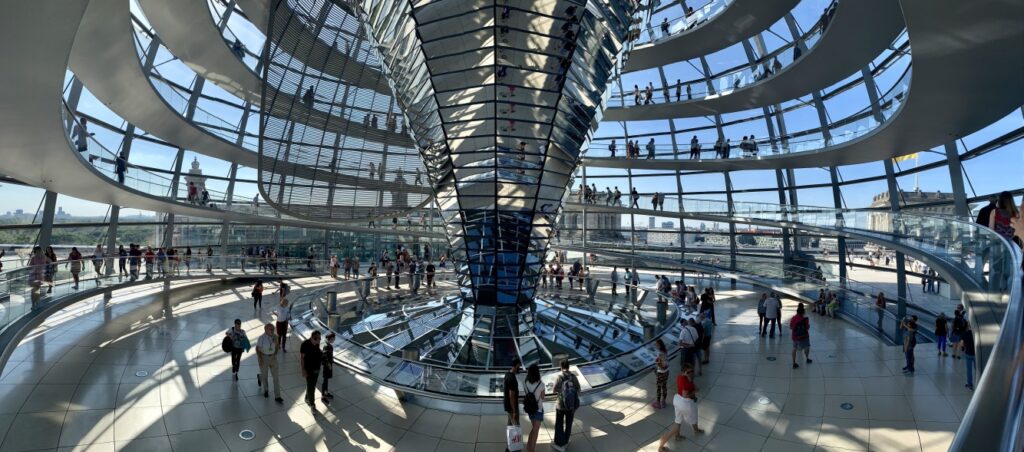
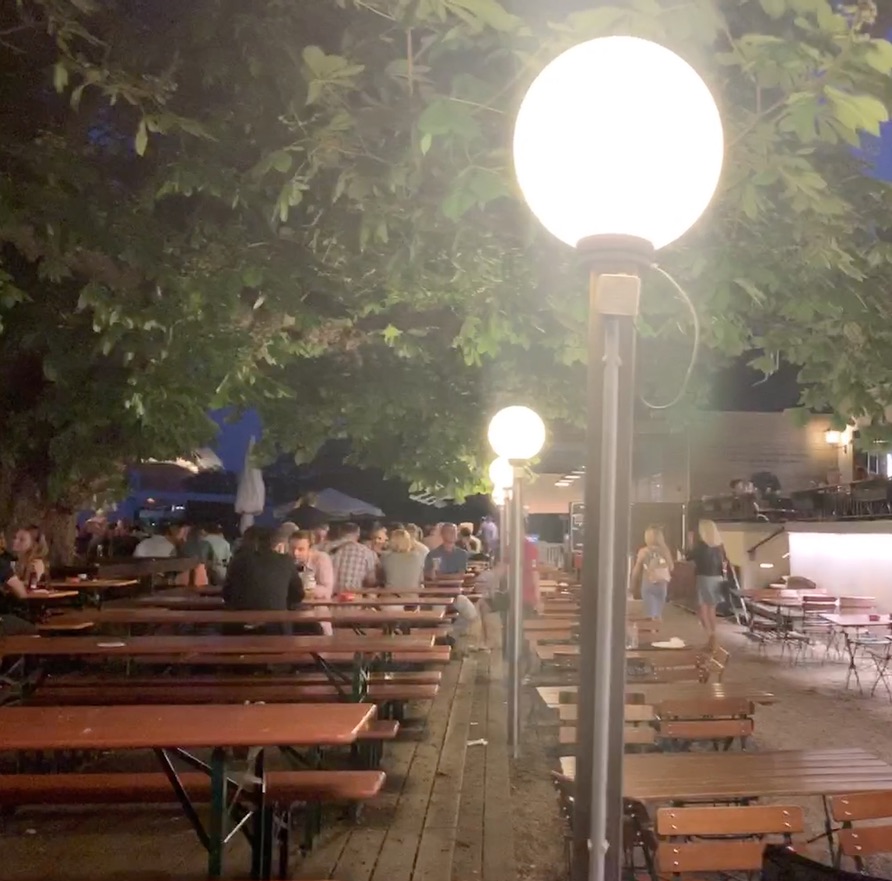
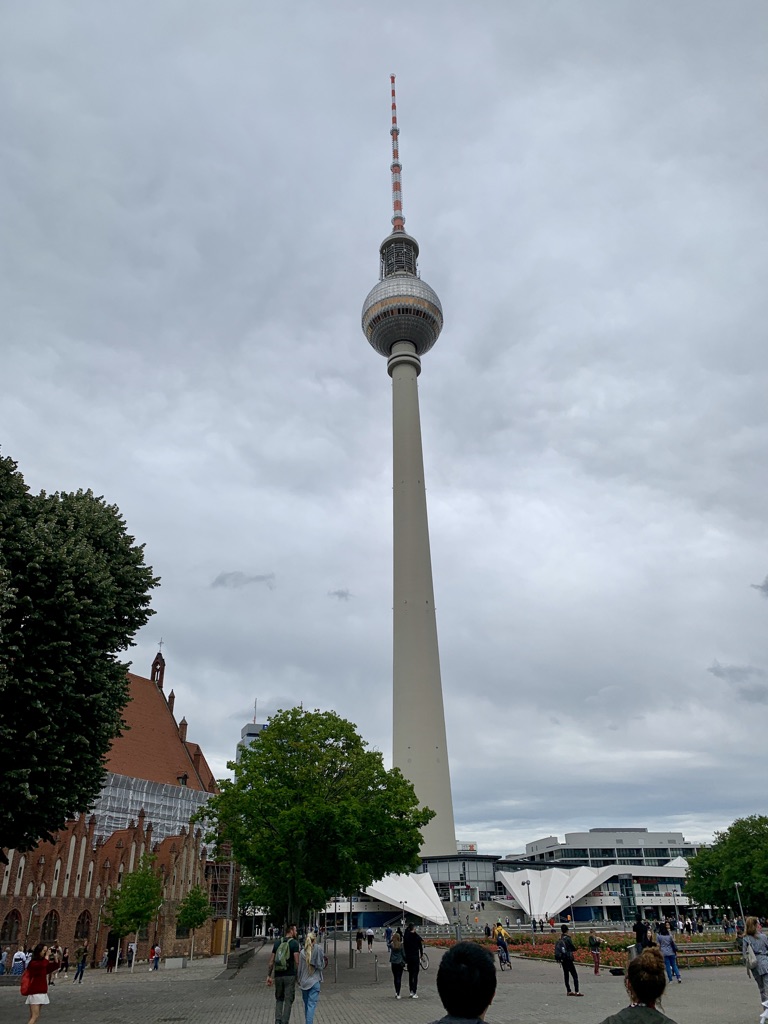
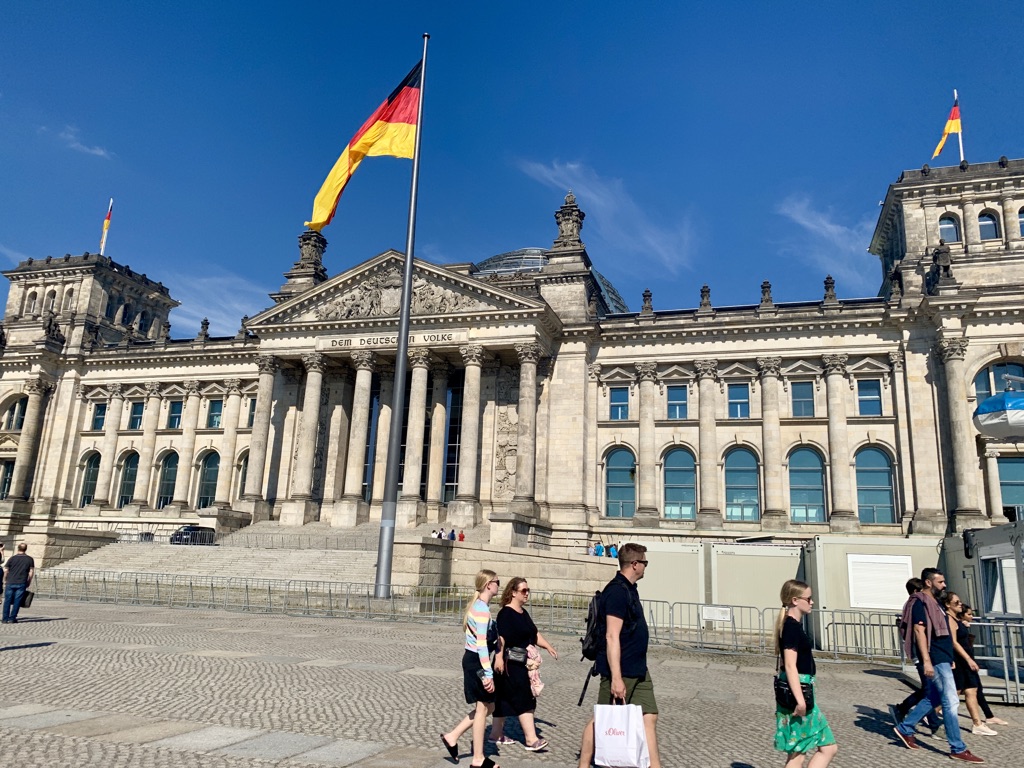
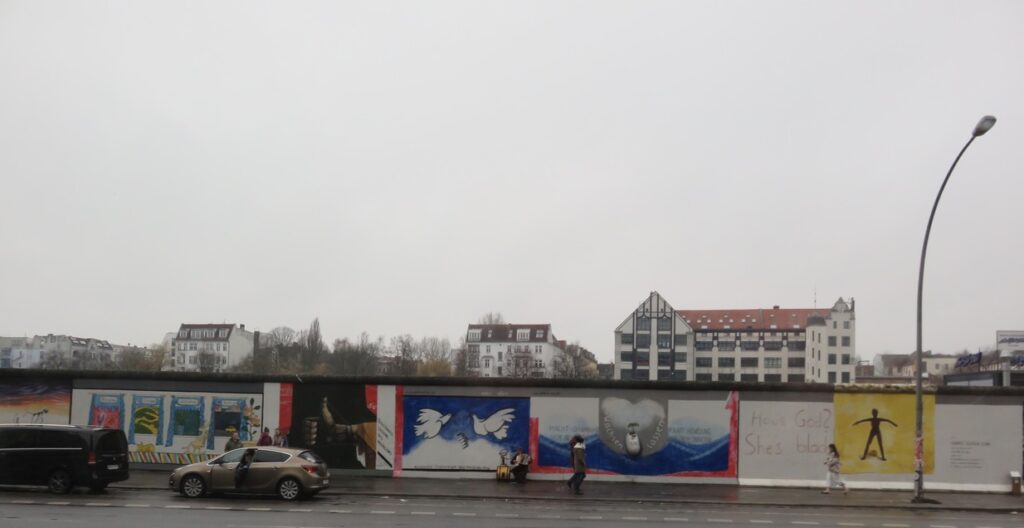
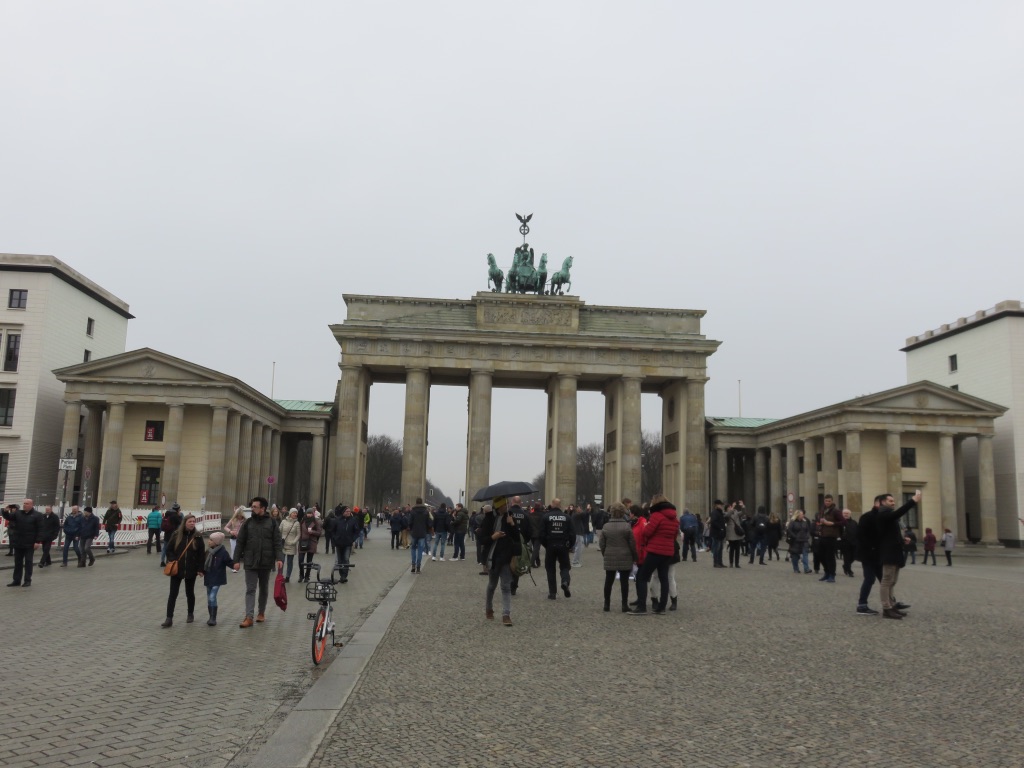
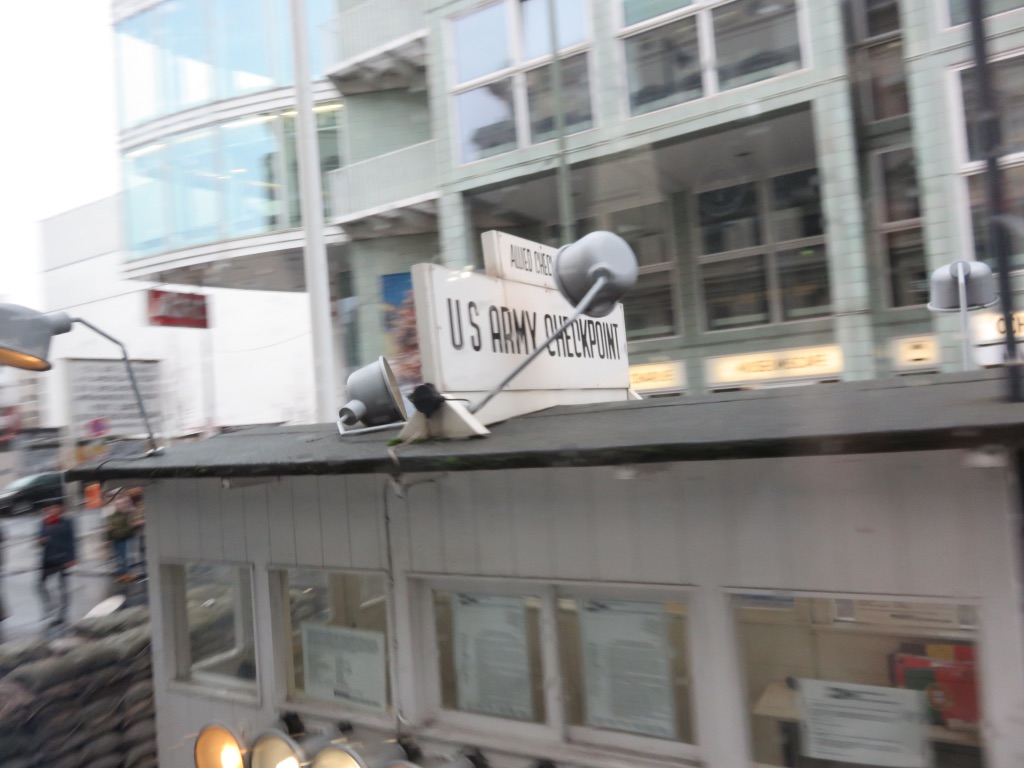







Once the center of World War II and the Cold War, Germany’s modern capital is alive with social life again. From fun restaurants to stunning landmarks, Berlin offers a reminder of Europe’s past and invitation into an urban future. Berlin provides a unique destination for any European itinerary. Plus, it’s a great jumping off point for Germany’s train system or road trip. Our favorite places to pair with Berlin would be Speyer, Germany (by train), or Munich, Germany (by train or car).
Affiliate Disclaimer: This post may include affiliate links. This means that if you make a purchase after clicking on one of these affiliate links, we may earn a small commission at no extra cost to you. For more information, please visit our Privacy Policy Page and Disclosure Policy Page. We only link to our favorite services and companies.
Where to Stay: Sheraton Berlin Grand Hotel Esplanade
Located near the Zoo and Tiergarten, the Sheraton Berlin Grand Hotel Esplanade offers modern rooms and a great breakfast. The hotel’s lobby boasts a large reception desk for checking in and finding assistance during your stay. Our room was located fairly high up, and offered a pretty view of the surrounding neighborhood. The Sheraton is larger than most of our European hotel recommendations, but the size is worth it!
By far the highlight of our stay was the breakfast. Located near the lobby, the large breakfast room offered a wide variety of food options that were served buffet style. (Note: we visited prior to COVID-19, so the breakfast buffet may have changed since our last visit.)
Find out more about the Sheraton Grand Hotel Esplanade here
Where to Eat in Berlin, Germany:
Berlin is a place where you can find great food anywhere in the city. Don’t drive across Berlin to hit one specific restaurant, since each neighborhood has their own favorites. Instead, we suggest checking Yelp or Trip Advisor to find well rated restaurants nearby. That being said, we do suggest two restaurants near the hotel, as well as one beer garden in the center of Berlin’s landmarks.
Restaurant Ambrosius
This locals restaurant offers fun German cuisine. We loved the understated ambience of the restaurant. Restaurant Ambrosius offers daily specials, as well as local favorites such as schnitzel and beef goulash. Plus, it is lonly a block from the hotel, so it is a really easy walk to get there! Restaurant Ambrosius is the perfect spot for dinner when you first arrive in Berlin after a long day of travel.
Tra di Noi
Located half a block from the hotel, this Italian restaurant offers great pastas and other Italian dishes. We enjoyed eating at Tra di Noi after long touring days (and after eating lots of sauerkraut and schnitzel)!
Zollpackhof

If you are looking for German beer garden, Zollpackhof would be our recommendation! We stumbled upon this spot by chance, but will definitely come back the next time we are in Berlin. Zollpackhof is located directly across the river from the Chancellor’s offices (Germany’s version of the White House). In addition to its great location, the food here is really good! Plus, the restaurant offers both outdoor and indoor seating, so you can visit during any kind of weather.
Things to Do in Berlin, Germany
Berlin is a city where the primary activity is sightseeing. From historic monuments such as the Brandenburg Gate, to Cold War era stops such as the Berlin Wall and Checkpoint Charlie, to modern German government buildings, Berlin has countless famous landmarks. We suggest booking a guided tour through your hotel, considering a hop-on-hop-off bus tour, or investing in a Rick Steve’s Berlin/Germany book in order to utilize his walking tours. Any of these options will allow you to better understand everything you see.
We want to emphasize something before you start planning: you won’t make it to every landmark and museum in Berlin. Personally, I’ve been there twice and utilized both guided tours and self-guided walks during my visits. Even so, I have never stepped foot in most of the museums and have missed several key landmarks. I suggest prioritizing what you find most valuable (i.e. a city bus tour, hitting specific museums, or walking to key landmarks), in order to maximize your time in Berlin. To help you choose your list, here is our shortlist of can’t-miss highlights based on our tours in Berlin.
Visit the Reichstag

The Reichstag is Germany’s primary government building (the German equivalent of the U.S. Congress Building). For modern Germany, the Rheichstag represents political unity: after reunification, Germany restored the remains of this building (damaged in 1933 by a fire).
To represent Germany’s meld of history and future, a glass dome replaced the old dome. This glass dome also represents that democratically elected officials can be seen and held accountable by the people of Germany (the picture below shows the inside of the dome). You can book tickets to visit the inside of the dome and walk up to the top, or you can just drive past the building on a bus tour.

Pass Checkpoint Charlie

While Checkpoint Charlie is one of Berlin’s most important landmarks, it was not our favorite landmark. Checkpoint Charlie was once a critical gate for movement between East and West Berlin during the Cold War. At one point, this was one of the only passages into West Berlin (besides by air) from the outside World. Checkpoint Charlie was also notorious for smugglers attempting to bring East Germans into the Western World.
Checkpoint Charlie is definitely a can’t miss stop while in Berlin, but don’t worry about budgeting a large amount of time for it. While there are some souvenir stores and a museum, we suggest minimizing your time here by visiting on a bus or driving tour for a quick photo op, and maximize your time elsewhere.
Walk beside the Berlin Wall

While most of the Berlin Wall was destroyed following the Cold War, parts were kept as a reminder of Berlin’s history. Today many of these pieces of the wall are on display at the East Side Gallery.
Located along the Spree River, the East Side Gallery offers several famous murals painted on different sections of the wall. We enjoyed seeing the murals. Plus, we got to learn about some of the pieces that held deeper meanings about the culture around the Cold War.
Visit the Memorial to the Murdered Jews of Europe
Germany’s memorial to the Jews killed in the Holocaust is a massive outdoor installation. Visitors can walk through rows of black cubes of varying heights, which (in part), represent the confusion and isolation caused by the Holocaust. Below the installation is a museum that memorializes some of the victims of the Holocaust. The goal of this memorial is to better tell the story and prevent history from repeating. It’s a moving memorial, and a jarring reminder of what happened in Europe less than a century ago.
Visit the Old Center of East Berlin

Located in what was the center of East Berlin, the Fernsehturm Tower was once the symbol of Soviet power in Berlin. Today, the tower stands near Alexanderplatz, a large pedestrian courtyard that is lined with restaurants. We enjoyed walking around this area of Berlin in order to better understand what was East Berlin. In addition to Alexanderplatz, we wandered along post World-War II Soviet boulevards around the Tower.
Visit the Brandenburg Gate

Last but not least, the Brandenburg Gate is a must-see stop while in Berlin. Originally built in the 1700’s, the Brandenburg Gate celebrated Prussia’s military successes. While damaged during World War II, the Brandenburg Gate shockingly never fell. During the Cold War, the it stood at the edge of East Berlin, with the Berlin Wall behind it. Today, the Brandenburg Gate is one of Berlin’s most famous landmarks, and is a symbol of Germany’s history and unification.
An Important Final Note: An EXTREMELY Brief explanation of East and West Berlin (which is critical to understanding Berlin today)
At the end of World War II, the U.S., U.K., France, and Russia split Germany (and the capital of Berlin) in four. The goal was for each country to assist their region in rebuilding physically and socially, and then step out. The U.S., France, and the U.K. quickly merged their regions to be assisted in unison (called “West Germany”). Berlin is located in the middle of what was Russia’s quadrant (“East Germany”), so West Berlin was an island in Soviet controlled East Germany.
The Berlin Wall encircled West Berlin for two reasons: control movement into West Berlin and ban East Berlin citizens from entering Western culture. Thus, the few gates (i.e. Checkpoint Charlie) became critical to crossing (which was only allowed for certain people such as government officials).
Because of these complicated interactions between Communism and Western Democracies, Berlin became a Worldwide illustration of Cold War politics. Today, the fall of the Wall serves as a mark of the end of the Cold War.

